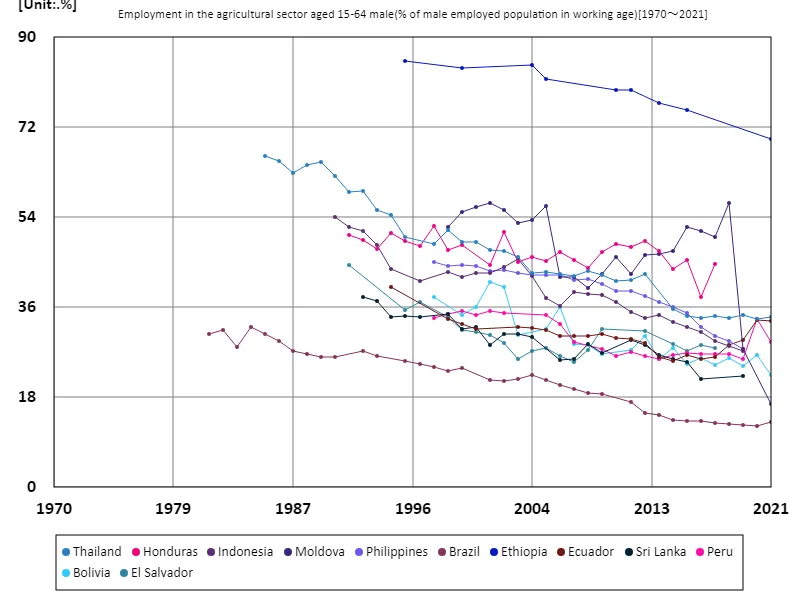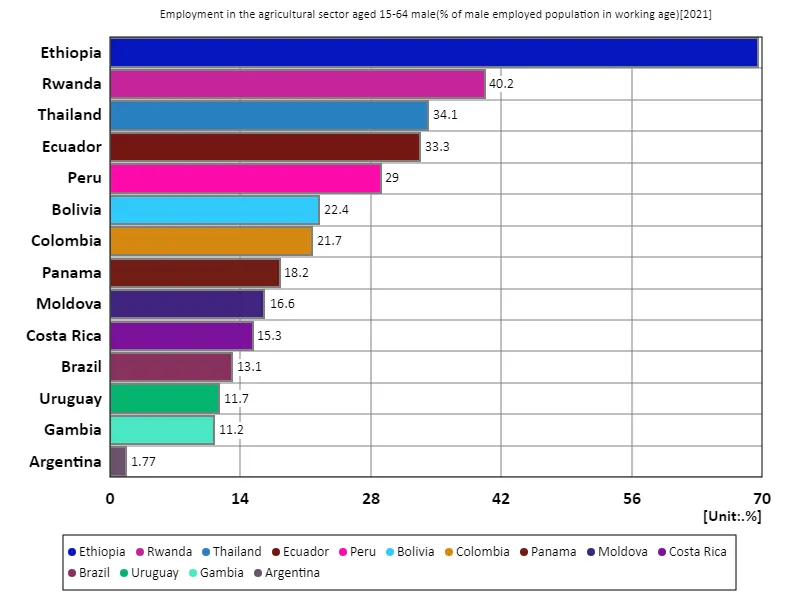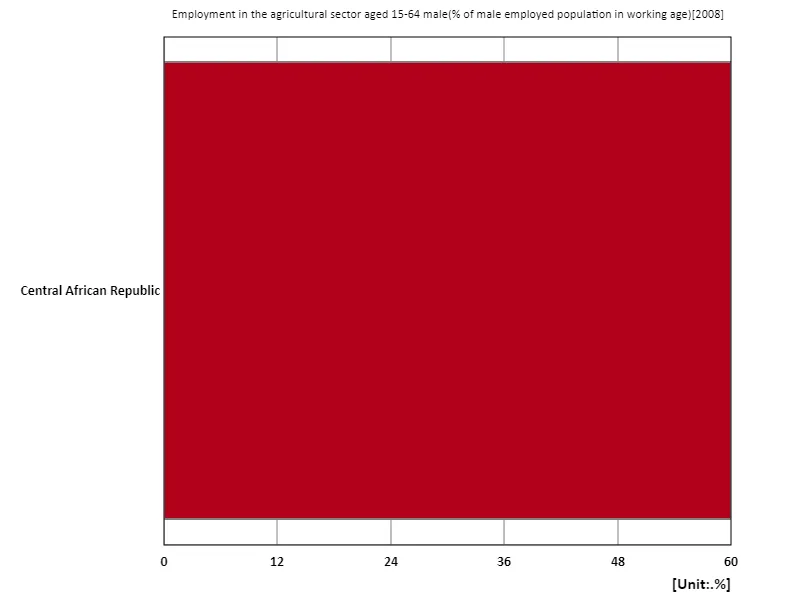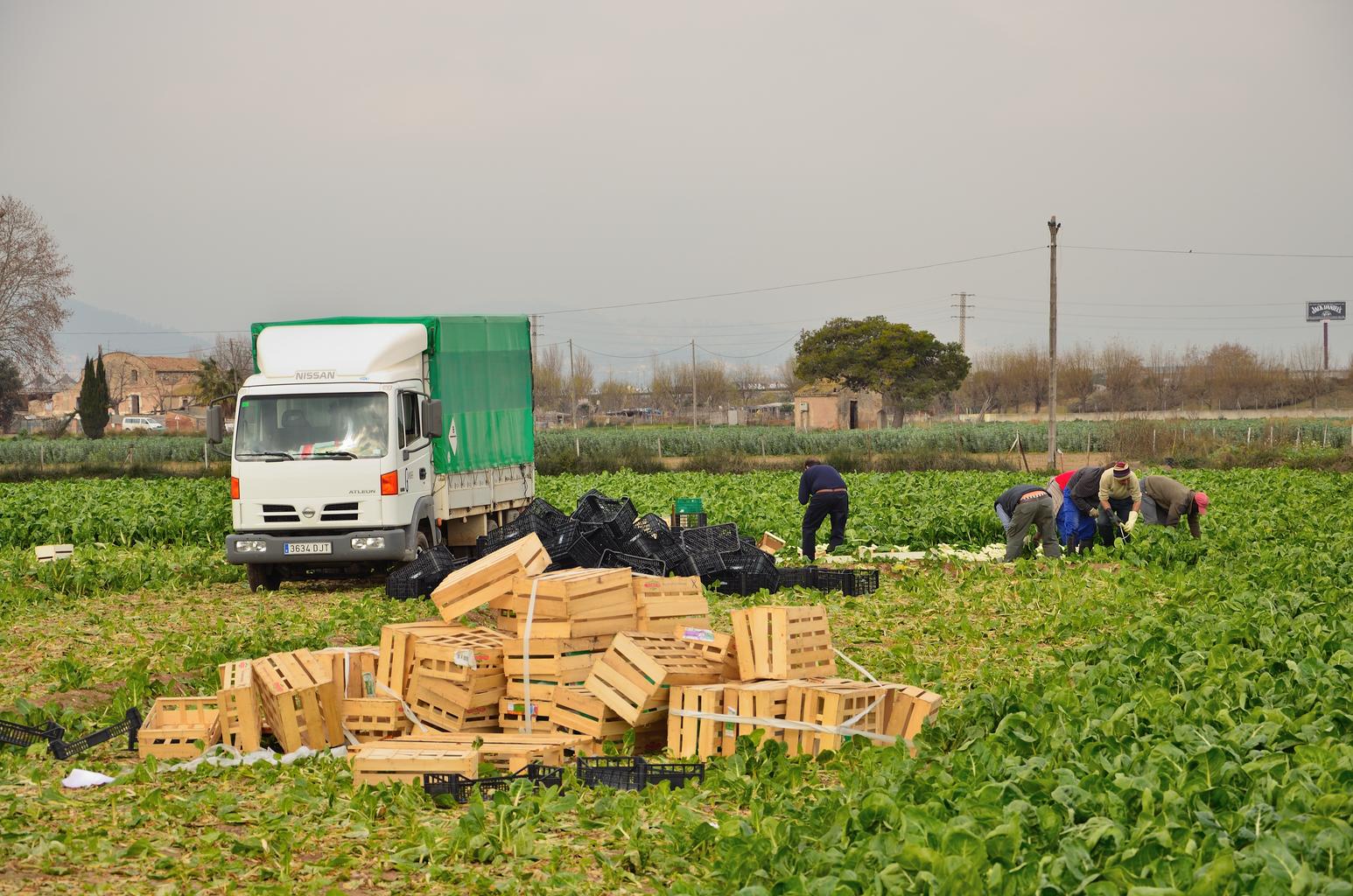- Abstract
- Employment rate in the agricultural sector for men aged 15-64 (percentage of working-age males in the labor force)
- Employment rate in the agricultural sector for men aged 15-64 (percentage of working-age male employed population) (Worldwide)
- Employment rate in the agricultural sector for men aged 15-64 (percentage of working-age males in the labour force) (world, latest year)
- Employment rate in the agricultural sector for men aged 15-64 (percentage of working-age males in the labor force) (region, latest year)
- Reference
Abstract
Data showing that Ethiopia’s 2021 agricultural sector employment rate of 69.6% indicates that agriculture remains a major source of livelihood. Agriculture is a major source of employment in many developing countries, with the agricultural sector playing a central role in the economy in countries such as Ethiopia. Over the past few decades, employment in agriculture has remained high, due to the country’s high dependency on agriculture. In recent years, many countries have seen a decline in employment in the agricultural sector due to urbanization and industrialization, but Ethiopia remains dependent on agriculture and employment in the agricultural sector remains high. The factors behind the data are thought to be the level of economic development and differences in policies.
Employment rate in the agricultural sector for men aged 15-64 (percentage of working-age males in the labor force)
The employment rate in the agricultural sector among men aged 15-64 in Ethiopia shows notable changes between 1981 and 2021 data. Ethiopia recorded a peak of 85.2% in 1995, indicating that the agricultural sector accounted for a large proportion of the male working population. This was because agriculture was the main source of livelihood and played a central role in the economy. In subsequent decades, employment in agriculture gradually declined, to 81.7% in 2021. This downward trend reflects Ethiopia’s increasing urbanization and economic diversification, which is creating more employment opportunities in sectors other than agriculture. Although the country’s dependence on the agricultural sector has declined slightly amid the growth of urban areas, infrastructure development, and industrial diversification, it still maintains a high employment rate. While Ethiopia remains an agriculture-based economy, it is undergoing a transition to a modern economic structure, which is reflected in the fluctuations in employment rates.


The maximum is 85.2%[1995] of Ethiopia, and the current value is about 81.7%
Employment rate in the agricultural sector for men aged 15-64 (percentage of working-age male employed population) (Worldwide)
Data from 1981 to 2021 show a notable change in the employment rate in the agricultural sector among men aged 15-64 in Ethiopia. The country recorded a peak of 85.2% in 1995, indicating that agriculture was the main source of employment at that time and many men were employed in agriculture. However, the employment rate has declined in subsequent decades, standing at 81.7% in 2021. This decline reflects Ethiopia’s economy becoming increasingly urbanized and industrialized. This is because although employment in the agricultural sector remains high, non-agricultural employment opportunities have increased, making the country somewhat less dependent on agriculture. Efficiency improvements in agriculture, technological innovations and changes in economic policies also affect employment rates in the agricultural sector. Overall, it can be said that Ethiopia is in the process of transitioning from an agriculture-based economy to a more diversified economy.


The maximum is 85.2%[1995] of Ethiopia, and the current value is about 81.7%
Employment rate in the agricultural sector for men aged 15-64 (percentage of working-age males in the labour force) (world, latest year)
According to 2021 data, Ethiopia records the highest employment rate in the agriculture sector for men aged 15-64 at 69.6%. This figure shows that Ethiopia’s economy remains highly dependent on agriculture. In contrast, the overall average is 24.2%, indicating that globally, male employment in the agricultural sector is relatively low. The total of 338% is the combined employment rate for each country, suggesting that overall agricultural employment varies widely across a range of economic conditions. Employment in the agricultural sector has declined over the past few decades as many countries urbanized and industrialized, but it remains high, especially in developing countries. In countries like Ethiopia, agriculture is a key source of employment and the country’s underdeveloped economy continues to be highly dependent on the agriculture sector.


The maximum is 69.6% of Ethiopia, the average is 24.2%, and the total is 338%
Employment rate in the agricultural sector for men aged 15-64 (percentage of working-age males in the labor force) (region, latest year)
In 2008, the Central African Republic recorded the highest employment rate in agriculture and primary occupations for men aged 15-64 at 60%. The figures show that agriculture and primary occupations are the main sources of employment in the Central African Republic, indicating that the economy remains heavily dependent on traditional occupations. Meanwhile, the overall average and total is also 60%, which indicates that around 60% of employed males across the countries surveyed are engaged in agriculture or primary occupations. From this data it is clear that agriculture and primary occupations remain the major sectors of employment, especially in developing countries. In many countries, employment in the agricultural sector has been declining as the economy modernizes and industrializes, but in many countries it remains high. In particular, in economically underdeveloped countries such as the Central African Republic, agriculture and primary occupations are the main sources of employment and dependency on them remains high.


The maximum is 60% of Central African Republic, the average is 60%, and the total is 60%



Comments